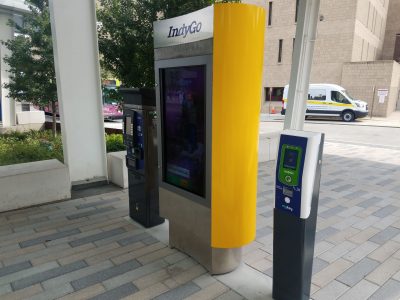
After months of study, deliberation, and community conversations, the Destination Medical Center Corporation (DMCC) Board approved a transit circular route along 2nd Street SW and Broadway, and approved bus rapid transit (BRT) as the mode of transportation. Included in the approval is a commitment to pursue affordable housing at the two transit villages that will mark the ends of the route. The Rochester City Council also approved the same key components.
The circulator will provide high quality downtown public transportation service for residents, commuters, businesses, patients, students and others to transit villages located in two locations on the northwest and southern edge of downtown. Destination Medical Center (DMC) and the City of Rochester began planning for the circulator to prepare the community for a growing number of downtown commuters.
“We anticipate the number of commuters into downtown growing from 35,000 today to more than 60,000 in 2040,” said Patrick Seeb, director of economic development and placemaking for Destination Medical Center Economic Development Agency. “Our streets and downtown land really demand that we develop alternative modes of transportation.”
DMC and city staff members used several methods to determine a recommendation of both the route and mode of the circulator to the DMCC Board and Rochester City Council. In addition to integrated transit studies, they turned to the public for feedback online and at public events. Some staff members traveled to Minneapolis, St. Paul, and Indianapolis to see and experience their rapid transit systems firsthand.

This research and outreach ultimately led staff to recommend the bus rapid transit system along 2nd Street SW and Broadway. They cited several reasons, including lower cost, future flexibility as technology evolves, and minimized disruption to neighborhoods. Seeb says it will be a “high-amenity” transit system.
“We often hear the term ‘bus rapid transit’ and this is more than a bus system,” he said. “This is a rapid transit system that uses electric bus vehicles and has the amenities that would be expected of a high-quality transit system.”
Next, city and DMC leaders will work together to advance an application to the Federal Transit Administration (FTA) to gain federal funding. The goal is to submit the project for the FTA Small Starts funding program by a September 4, 2020 deadline, with hopes to obtain the federal funding in 2022. Construction would begin that summer with transit services anticipated to begin in March 2025.
Seeb says more details will emerge and questions will be answered during the next phase of the application process.
“Our application will have to address an environmental analysis, which includes neighborhood impact, natural environment impact and traffic impact,” he said. “Our engineering studies will help confirm station locations along the route, detailed cost estimates of the project, and further define the ridership expectations.”